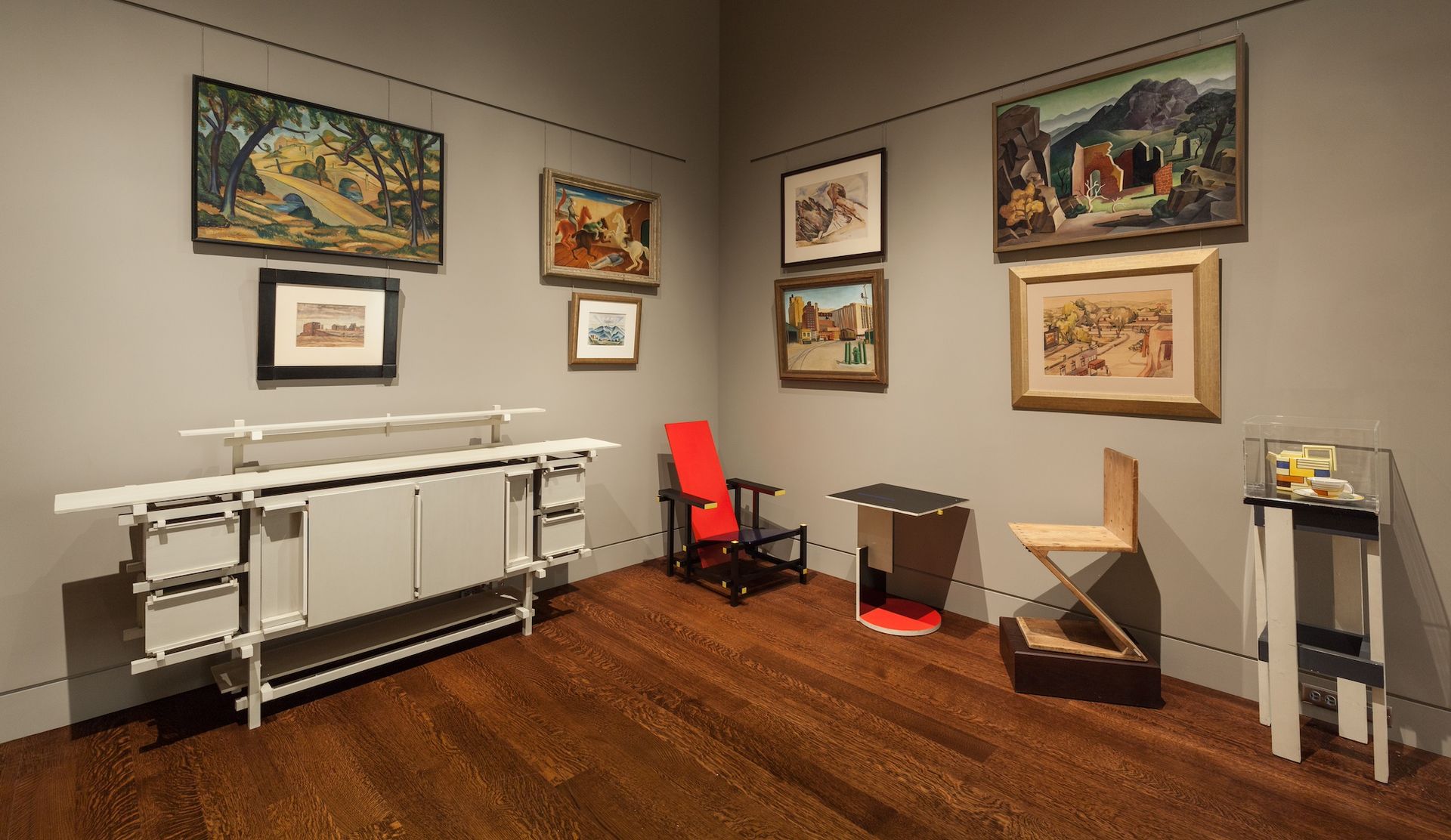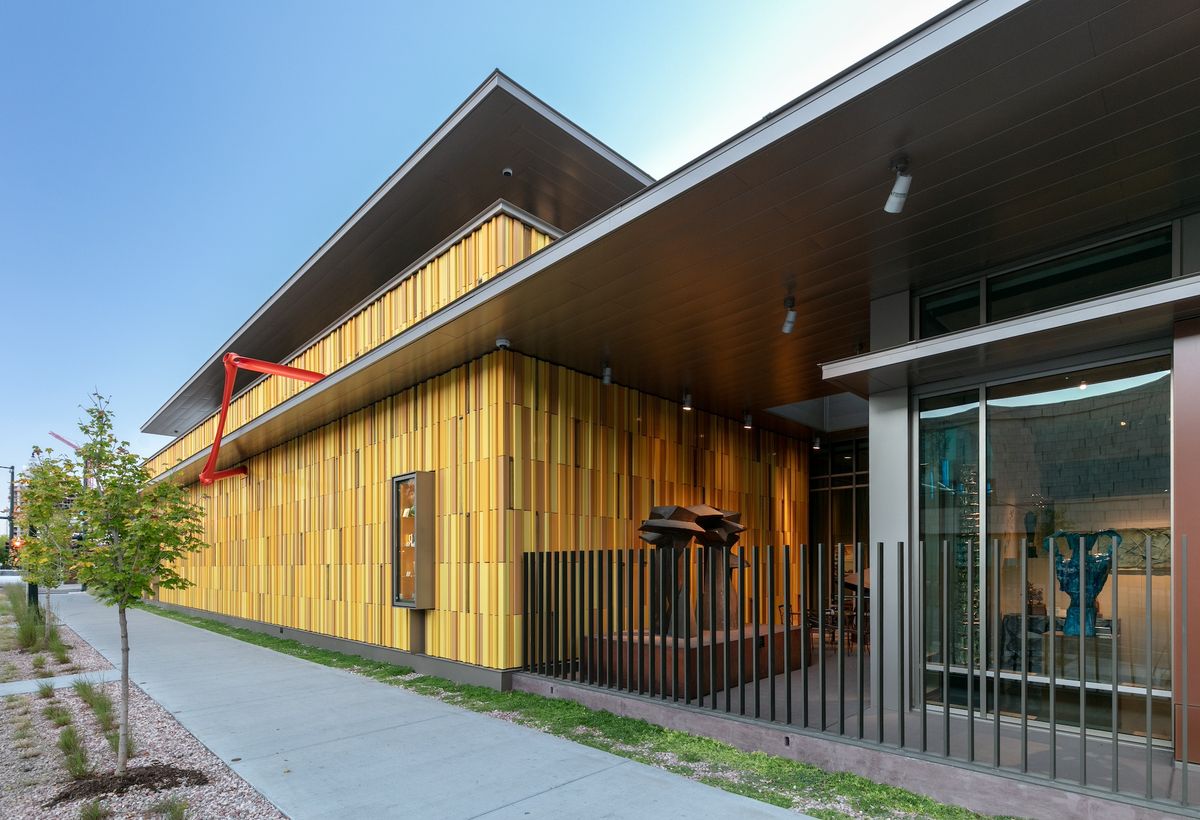The Denver Art Museum (DAM) is poised to become home to one of the largest US collections of decorative art following a merger with the neighbouring Kirkland Museum of Fine & Decorative Art, announced last week. The addition of around 35,000 objects from the Kirkland collection, with examples of every major design movement and period from Arts & Crafts to Postmodern, will increase the DAM’s total permanent collection by around 30%.Thanks to philanthropist and Kirkland co-founder Merle Chambers, the collection comes with an endowment of $28m to cover operating expenses and programming costs.
The Kirkland’s namesake is artist and educator Vance Kirkland who arrived in Colorado from Ohio in 1929 as the founding director of the University of Denver’s School of Art. In 1932 he left the university to establish the Kirkland School of Art, which operated for the next 14 years in the same small building that housed his studio. Kirkland worked in a variety of painting styles, from Surrealism to Abstract Expressionism, but he is best known for his extraordinary dot paintings, which he executed in a unique mixture of oil paint and water.
Kirkland died in 1981 without heirs, leaving his close friend, Hugh Grant, as executor of his estate. Grant mounted several exhibitions of Kirkland’s work domestically and abroad for the next two decades before establishing the museum in 2003 in Kirkland’s old studio. The humble Arts and Crafts brick structure was a piece of Denver history even before Kirkland moved in, playing host to artist Henry Read’s school (Read’s Students’ School of Art) as well a popular meeting place for the Denver Artist’s Club, which later became the DAM.

Vance Kirkland's studio workroom at the Kirkland Museum of Fine & Decorative Art Ron Ruscio
In 2016, the Kirkland was relocated to a new site a block from the DAM. Architect Jim Olson designed a new 38,500 sq. ft museum to attach to the 1911 studio, expanding exhibition capacity. Kirkland’s paintings and the work of his regional peers remained on display, but the significant international decorative art collection built by Grant took centre stage.
Grant retired as the museum’s founding director late last year. Around that time, Sally Leibbrandt, a member of the museum’s board of directors, says she and the board started to ask how to best steward the institution. Leibbrandt expressed a desire for a partnership that ensured the collection would always be available to the public and yield it greater visibility.
Marriage of convenience or necessity?
Several institutional and collection mergers in recent years have been brought on by operational headwinds for one (or both) parties. The Worcester Art Museum acquired 1,500 objects from the Worcester Higgins Armour Museum in 2014 after it closed. The closure of the Corcoran Gallery in Washington, DC, that same year meant 8,631 objects were acquired by the National Gallery of Art and 9,000 objects went to the American University Museum at the Katzen Arts Center.
Leibbbrandt notes that the Kirkland was not under financial duress, which financial disclosures confirm. The merger with the DAM more closely echoes last year’s merger between the San Diego Museum of Art and the Museum of Photographic Arts, in which each institution retained its independent building, but one museum was subsumed as a curatorial department of the other. As part of the DAM merger, the Kirkland will be renamed the Kirkland Institute at the Denver Art Museum.

The De Stijl Room at the Kirkland Museum of Fine & Decorative Art Wes Magyar
Christoph Henrich, the DAM’s director, says the merger demonstrates the generosity and passionate collecting of founders Grant and Chambers, who “are really interested in preserving the spirit and idea of the collection, and not so much interested in preserving their names or personal legacy”.
By next year, Henrich estimates visitors to the Kirkland will notice some changes. Currently, the Kirkland display practice could be described as abundant, with modest-sized galleries full of display cases and salon-style installations. This display strategy is why museumgoers under age 13 did not have access previously.
“We want a museum that is accessible for everybody,” Henrich says, noting the density of display will change to make that possible. He adds that the DAM is fully bilingual, and the addition of wall text, labels and bilingual programming at the Kirkland will be implemented over the next few years.
Since the DAM’s decorative art collection will grow from 20,000 to nearly 55,000 objects with the merger, Heinrich says some deaccessioning will be required. “There’s a small overlap with our collections,” he says. “We will look and we will decide who has the better objects. We have the full endorsement of Chambers and Grant, because in the end we want the finest collection not the most in numbers.”


